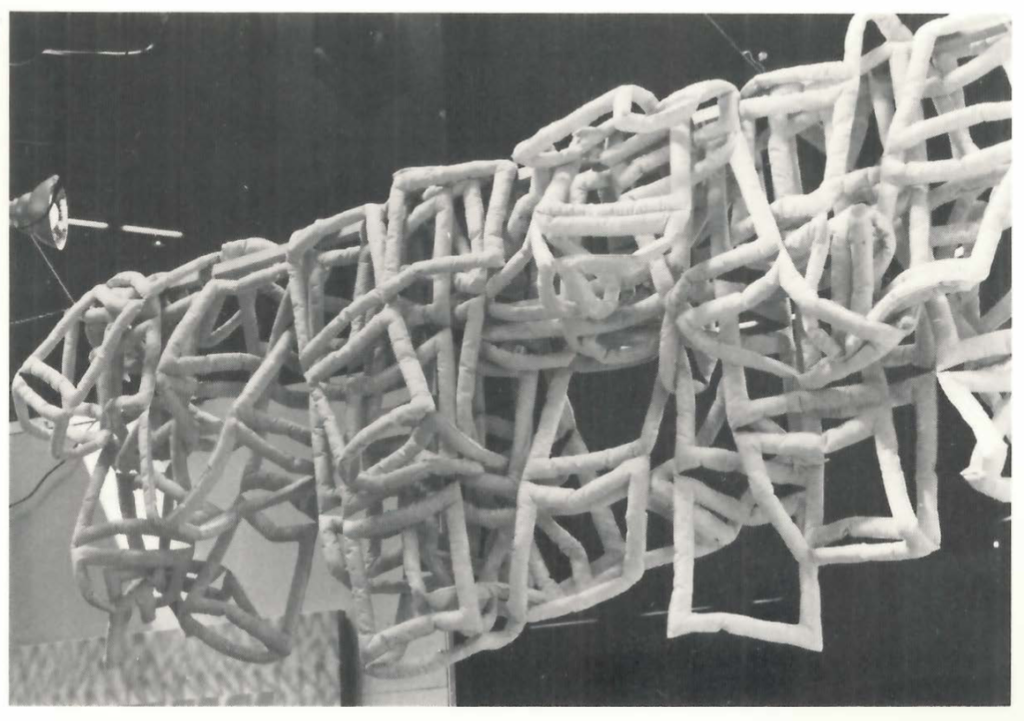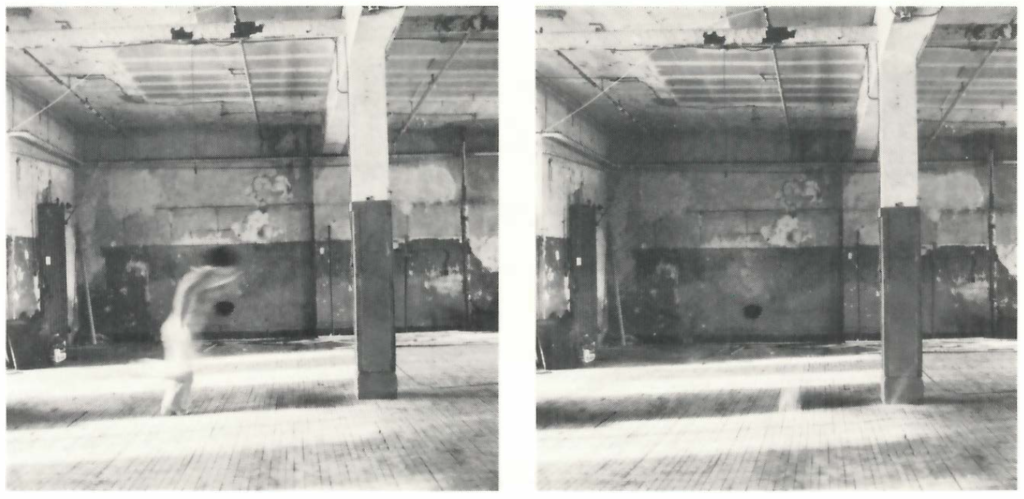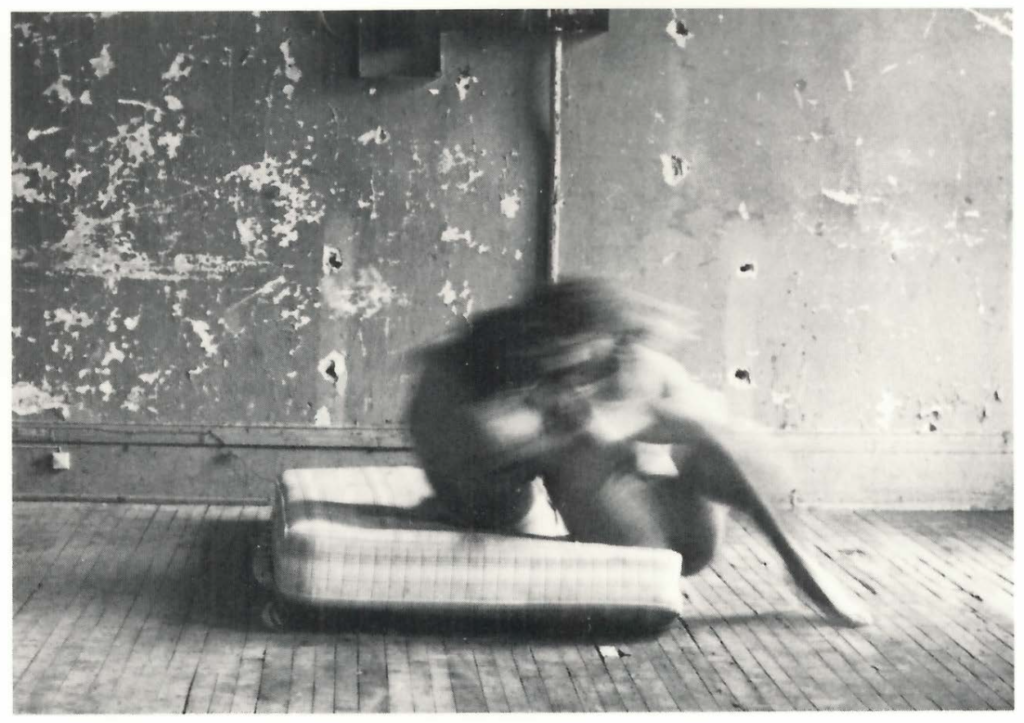Veiled Relations: The Fabric of Sorel Cohen’s Work (1986)

Graham, Robert. (1986). Veiled Relations: The Fabric of Sorel Cohen's Work. In Sorel Cohen...et les ateliers de femmes (ou se jouent les regards). Musée d'art contemporain de Montréal, pp. 27-31.In a decade of photographic art activity, Sorel Cohen has produced a body of work which displays an uncommonly clear logic of development and consistency, concentrated in only a few separate project series, and culminating in the presentation of the current exhibition. During this same decade, feminist art (as a category, purpose and orientation) has become accepted, and accepted in the same way that feminism (in all its variety) itself has been – not as a fulfilled program, but as an irrevocable dimension of any discussion of social relations. Cohen’s work has not only passed through stages which mirror the developments within feminism itself, but also contributes to the formation of the ways in which women can define and determine the ground and terms of their emancipation.
Whatever advancement the women’s movement of the last two decades has gained in the official, legal realm of practical enfranchisement, has been surpassed by its success in revitalising the global examination of interpersonal relationships. The correction of major injustice in the places of work and politics has been joined with a critique of present human relations in all regions, including those of sex, art and the body, the home and the street . Beyond the ongoing reforms, feminism has pulled Western consciousness up by the roots and encouraged a radical examination of the sources of our manner of thinking, speaking and behaving.
Cohen’s training and early work were within the traditional art media. Among the last of her pre photographic pieces is a series of sewn and stuffed geometric shapes – a series which prefigures some of the strategies and techniques Cohen and other women artists would adopt later. Rosalind Krauss has written of how the grid, in all its unnaturalness, became the very emblem of modernism and its segregation of the visual arts from the rest of the world and of a culture autonomous from nature.’ 1 In Grid #1 (1975), Cohen did several things in employing this particular form – she displayed her connection to modern art history, she transformed the figure by shaping it with materials and processes traditionally associated with women and by this transformation, this appropriation/adaptation she collapsed (in several ways) its authoritative power.

The Shape of a Gesture, 1978
The first camera work continued this transformation of art by stressing the personal and autobiographical and folding imagery and processes from her own experience into her art. Calendar (1976) uses the grid again, doubly, as the pattern of the bedcover and as the arrangement of the photographs. The series Le Rite Matinal (1977) and The Shape of a Gesture (1977-78) retain the grid in their organization, but also introduce a new element – motion, specifically the sense of motion produced by a camera’s slow shutter speed and particular ly the action of moving cloth. Within the ·new’ technology of the camera, Cohen has created the most versatile use of fabric outside of the textile crafts. As a material of construction, as rag, drape, cover or veil, cloth is employed by Cohen with tremendous diversity. The coloured translucency of fabric in motion caught by a camera with a long shutter opening has become an almost exclusive signature of her work. Cohen brings cloth along with her in her development, but changes its association from women’s craft material to performance instrument.
After the domestic staging of the autobiographical work , Cohen began studio based work which indicated her rightful claim as a practising artist. As Daniel Buren remarked, “The art of yesterday and today is not only marked by the studio as an essential, often unique, place of production; it proceeds from it.” The mythic sanction the studio gives to work done within its walls, its peculiar legitimizing effect is utilized by Cohen to signify her arrival. But the conditions of that victory and the terms of what has been won will later be questioned. The autonomy of artistic production represented by the space of the studio becomes seen as a not so splendid isolation. As Buren himself continues, “All my work proceeds from its (the studio’s) extinction.”2 While Cohen does not become a complete post-studio artist and abandon the site, she does go on to display a tense reflection upon its signifying determinations.

The Camera Can Obliterate the Reality It Records (1978) is a studio work which does not show the explicit personal and feminist content of the earlier domestic pieces. It is literally a work of transition in which the artist gradually disappears frame by frame to become entirely disembodied. The power of her art contains also the power to consume her. The After Bacon/Muybridge (1980) series does not contain her own figure, but is an expression and amplification of her perspective. The feminist critique of art history often dwells on the suppression of a female vision of the body and sex. Borrowing from and transforming the imagery of Eadweard Muybridge, whose failure as a scientist of motion was more than compensated for by his contribution to our camera sense, and of Francis Bacon, (who also borrowed from Muybridge), Cohen attempted to describe two kinds of neglected sexuality – first, a woman’s appreciation of the male body and second, a potential homoeroticism borne out of men’s in ability to touch each other outside of activities of violence. Also, it expresses her identification with the male homosexual as sharing, with women, the status of an outsider to male heterosexual hegemony.

Pausing in the chronology, we can observe in Cohen’s work the employment of three types of be ing and behaviour – Animal/Motion is the level of Muybridge’s studies and our status as creatures; Human/Action describes us as thinking, intentional agents and the level of Person/Interaction marks the character of our having identities and our engaging with each other communicatively. Cohen regularly plays between these levels and displays alternately or simultaneously our passages from level to level. The effect is to forbid simplistic analysis and to show the complex character of any human exchange in which there is a possibility of conflict and contradiction between levels.
In the current ongoing series, begun in 1983, An Extended and Continuous Metaphor, Cohen returns to act out in front of the camera a sophisticated ritual of artistic production and recep tion. Weaving all of the components of her previous work, she brings together motion, colour, the body, sexual representation and a woman’s experience of art in bold, sensual allegorical tableaux.
That the series is allegorical, and therefore ironic and self-negating, is overtly indicated in the title itself, which is a paraphrase of part of the Oxford English Dictionary’s definition of allegory. Also, visually, some pieces of the work echo Gustave Courbet’s 1855 Atelier, whose full title is The Painters Studio, A real allegory summing up seven years of my artistic life. Within the black, neutral non-space of an idealized site of artistic fabrication (the studio, again), within an absent or suppressed context, she rings the changes of the relationships between the archetypal artist, model and viewer who gather around the figure of painting itself in an allegory of present creativity. The pro fane grid has been replaced by polyptychs configured mock-sacredly after Flemish altarpieces.
As Craig Owens suggests in “The Allegorical Impulse”3, the contemporary rehabilitation of the allegorical mode is not a recognition of its superior expressive capacity, but the strategic application of its clumsy doubling effect, its congenital saying o f one thing while mean ing another, to present objects or copy processes while simultaneously seeking to undercut their power. In the instance of the Metaphor series, Cohen presents the interaction between the figures as a scene without conflict, a positive, successful and affirmative set of complementary turns. While her costume is neutral, though contemporary, the poses and style of representation of some of the individual pieces evoke the period and manner of, say, John Singer Sargent – a period in which the involvement in art was bound with an attempt to emulate a grand vision of the Italian High Renaissance. The persistence of this ancient model of art lies in its idealization of an art which satisfies all members of the constituency it occupies. The integration it displays is a false one, based on a romanticized notion of feudal service within highly circumscribed roles. It is a limited integration which requires the disacknowledgement of the larger encompassing contexts of society and history.
The artist presented is not just any kind of artist, but a painter, and the canvas and palette are the very signs of art (painting as ‘archetypal art activity’), the model, by her pose and drape, is the archetypal model, the spectator typical. Cohen shuffles the permutations (the algebraic cousin of the grid) of the components, which can be shown schematically as follows:

For the actual artist (Cohen) and viewer (you and I) and model (that is, Cohen performing the roles) know something that the models-artist/spectator/model do not: first, that someone is watching, that they are being observed and evaluated. Second, as the actual artist constructs something for us to observe, she is providing a description about that something which is not available at the level of the observed – the models ‘live’ their behaviour as art communicants, while Cohen abstracts it as a description and invokes it to be questioned. Put another way, the art world of painting is encompassed, ab sorbed, examined and consumed by the art world of photography. Just as it requires a logical mind to notice a non sequitur, the subtlety of her performance allows for the possibility of a viewer who does not see the metaphor or the irony and who considers the model of art shown to be acceptable and the work a representation of a matter of fact. What misunderstanding Cohen risks in not drawing in broad strokes is well made up for in the corrective contribution she makes for those receptive to her critique.
Cohen has been mostly well served by her commentators who have drawn out of her work the elements of observation, regard, etc. that are there. If there is any fault in some of the occasions of analysis it is in the possible reification of vision, which turns the act of seeing into a static protosymbolics where the eye, the pose or the relation ship itself become treated as uni-dimensional messages. Sight, sights and the lines of sight signify dynamically and mutably. “The orthodox interpretation of symbolism knows nothing of levels or of relative semiotic freedom in communications systems, and, by disavowing the context, it mimics the closed-system thinking of classical physics.”4
I offer that it would be a mistake to see in Cohen’s images the positive emblems of a heroic feminism. I don’t believe that the posturing of the model-artist is meant as a role model or that women artists should seek to legitimize their activity by reproducing in themselves the worst elements of traditional art relations. Cohen is not interested in substitution, in crossdressing the figures of art to replace men by women in established roles, but in redefining the relationships, abandoning the roles and forming new sets. The repudiation of master pieces is one necessary step for the reintegration of art with life. She is seeking to overcome the false autonomies of the domestic and the creative do mains which have divided human personality.
As a Jewish anglophone Quebecer and woman artist (margins upon margins) she has an outsider’s appreciation of the ways in which the center excludes the other from itself. Yet her work resists the temptation to cast the problem in terms of succession and replacement. The soft grid does not replace the hard grid, but demolishes through mockery the basis of its imagined strength.
The trajectory of her work illustrates that initial theoretical stance which Mary Kelly characterized as ‘the personal is political’. Cohen goes from turning out the personal into the social, to display ing socially a neglected perspective (female observation of male sexuality), to an examination of the social as social – especially the social determination of our mutual observation and the act of observation itself as fraught with unacknowledged desire and possession. Employing quotation, allusion, transformation, mimicry, parody, substitution, and strategic reversal, Cohen parades but distances the dynamic interaction within the topology of present artistic and sexual meaning structures. In assaulting the old, she cautions the new. For from such a critical skein she has woven not a banner to follow but the shroud for a burial.
Robert Graham
Notes
- Krauss, Rosalind, Grids, in October, No. 9, Summer 1979, p. 51.
- Buren, Daniel, The Function of the Studio, in October, No. 10, Fall 1979, p. 58.
- Owens, Craig, The Allegorical Impulse: Toward a Theory of Postmodernism, in Art After Modern ism, ed. by Brian Wallis; (New York and Boston, 1984), pp. 203-235.
- Wilden, Anthony, System and Structure, (London, 1980), p. 34. Wilden’s rich synthesis of Jacques Gean and Gregory Bateson criticizes any kind of simplistic, non-dialectical interpretation of ‘fixed’ symbolics, including that found in Freud. In a 1958 postscript to his 1936 New Guinea study, Bateson wrote, “Naven was written almost without benefit of Freud…My psychiatric taste and judgment were at that time defective, and probably a greater contact with the Freudian ideas would only have led me to misuse and misunderstand them. I would have indulged in an orgy of interpreting symbols, and this would have distracted me from the more important problems of interpersonal and intergroup process.” Bateson, Gregory, Naven, (Stanford, 1958) p. 282.